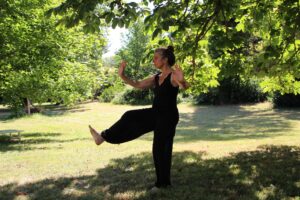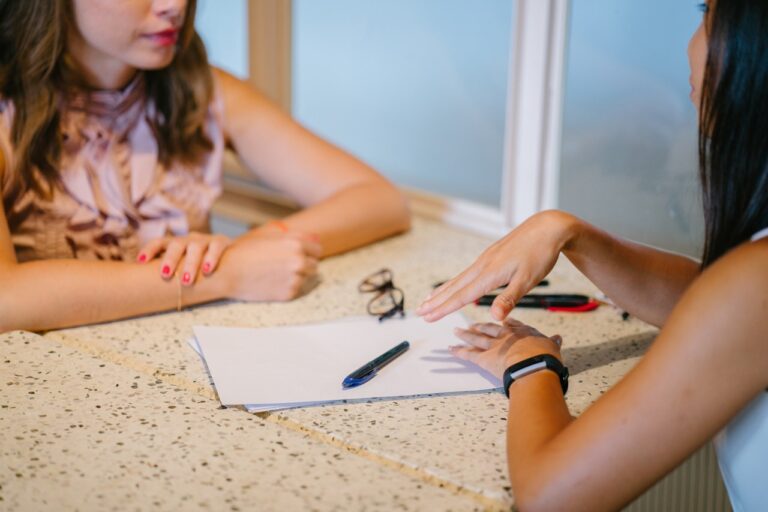Sarcopenia: the basics
Sarcopenia is an age-related condition.
As we get older, we experience a decline in muscle mass and strength, which starts from approximately 40 years old and onwards. Unfortunately, this can result in disability, poor quality of life, frailty, and an increased risk of death.
A recent review of several research studies revealed that the rate of sarcopenia globally is anywhere from 8% – 36% in people less than 60 years old. In those 80 years and above, however, this rises to an estimated 31% for women and 53% for men.
What causes sarcopenia?
Sarcopenia is generally thought to occur due to several reasons.

These reasons include:
- A decline in physical activity
- Not consuming enough protein and calories, and even “overnutrition” – this results in something called “sarcopenic obesity” that can accelerate how fast muscle mass and strength is lost
- A decline in hormones, such as testosterone, that are important for maintaining muscle mass
- A decline in the body’s ability to regenerate and replace muscle
- Inflammation due to ageing and a variety of chronic diseases e.g. rheumatoid arthritis
How is sarcopenia identified and diagnosed?
Sarcopenia is diagnosed by looking at muscle mass and function. This means measuring the muscle as well as assessing how well a person can carry out daily life tasks.
Less muscle means greater weakness and less mobility = increased risk of falls and fractures
Muscle mass can be measured using different imaging techniques such as CT scanning or Dual X-Ray Absorptiometry (DXA).
Muscle strength and performance can be assessed via various activities such as grip tests, sitting to standing tests, and timed walking tests. These physical performance tests can also be used to assess the severity of sarcopenia, which helps in planning treatment regimes.
Patients may also be asked to complete a questionnaire where they are asked questions around strength, assistance with walking, rising from a chair, climbing stairs, and falls.
Treatment of sarcopenia
Unsurprisingly, the primary treatment of muscle wasting due to sarcopenia is the incorporation of physical exercise into a weekly routine. Exercising improves muscle size, strength, and how well the muscles works.
Incorporating progressive resistance training – where you slowly build up your workout volume with weights, reps, and sets – is ideal.
Physical activity + exercise
Here is what Strength & Conditioning Coach and Exercise Physiologist, Nicole Struthers, recommends when it comes to combating the effects of sarcopenia……

One of the best ways to prevent muscle loss is to engage those muscles.
The old saying of “use it, or loose it” is true.
Below are a few exercises you can do to help mitigate the side effects of sarcopenia and slow the muscular weakness that often occurs as we age.
The exercises chosen target the bigger muscles of the legs involved in mobility, and the upper body and muscles involved in balance to help with fall prevention.
To maintain the ability to perform activities of daily living such as grocery shopping, cooking, and cleaning, we need muscle strength that can support us.
When going through the exercises, try to remind yourself that the last 2 repetitions should feel challenging to ensure we are creating an adequate stimulus on the muscles, so they get stronger. Another way to think about it is, you should have 1-2 repetitions left in the tank at the end.
All these exercises can be performed at home with minimal equipment or at a gym with additional equipment.
When it comes to resistance training, we often put pressure on ourselves to perform a hard, elaborate workout…. then get intimidated, and do nothing! So, before you get started, here are a few tips to keep in mind to help you adhere to a new movement habit:
- Start small – anything is better than nothing
- Consistency is key to seeing benefits
- It is better to do 3 exercises 3 x a week regularly than to do a hard workout 1 x a month
- Ensure your routine works with you and your schedule.
- Example: If you HATE the gym, don’t go! Do the exercises at home instead
Exercise Prescription
- Perform 1 – 3 sets of 6 – 12 repetitions for each exercise (remembering that the last 1 – 2 should feel challenging). You can perform each exercise individually or 2 as a little ‘mini set’ e.g. perform 1a, 1b, break, repeat 1 – 2 times, then move onto 2a, 2b.
- Aim to repeat the circuit 2 – 3 days per week
- Listen to your body. If something hurts or bothers an existing issue seek out an exercise professional to help you tailor the exercises to your needs
Exercise 1a: Chair sit to stand
Place a chair close to the wall for stability. Start in a standing position with feet about shoulder width apart. ‘Sit back’ into the chair so your bum touches the seat. Without resting at the bottom try to return to a tall standing position. Repeat 6-12 times.
Exercise 1b: Standing band rows
Loop a band over a banister or anchor around waist to chest height. Hold each end of the band in the hands. Standing tall with good posture, pull the band towards the chest leading with the elbows. Pinch between the shoulder blades at the end, then slowly return to the starting position. Repeat 6-12 times.
Exercise 2a: Standing hamstring curls
Stand behind a chair or counter. With hands touching for balance support, stand balanced on one leg with a soft bend in the knee. With the other leg, bring the heel up to the bum and squeeze the bum to engage the hamstrings. Ensure the knee stays pointing to the ground in one position. Repeat 8-10 times on one side, then switch.
Exercise 2b: Wall or counter push-ups
Start with hands at or just below chest height. Slowly lower your self towards the wall, counter or chair until elbows are close to a 90-degree angle. Engage the chest and core to push back up to the starting position. The lower the surface, the harder it will be. Repeat 6-12 times.
Exercise 3a: Single leg side kick
Balance on one leg. Once balanced, keeping toes pointed, kick the other leg to the side to engage some of the gluteal muscles that stabilize the hips. Try to perform 8-10 on one side without touching down in between kicks. Keep a chair or wall close by for balance support if needed (you can also gently hold the chair for balance support to start).
Exercise 3b: Calf raises
Hold onto the back of a chair/counter. Slowly roll onto the toes of both feet, aiming to get as high as you can. Control back to the ground and repeat. To make this one a bit harder perform 1 leg at a time, switching after 6-12 repetitions each side.
In addition to being an effective treatment, physical activity is immensely preventative, and is shown throughout medical research as a great way to prevent all kinds of conditions and diseases, age-related or not.
Nutrition
Another important preventative measure is nutrition. Implementing a healthy diet is effective in maintaining muscle health, serving both to prevent sarcopenia from developing and lessening its effects.
Experts in the field of protein and ageing recommend older adults should consume between 1.2 and 2.0 grams (g) of high-quality protein per kilogram of body weight every day. For example, someone that weighs 155 pounds (~70 kg) should consume about 84 g to 140 g of protein every day. These amounts should be spread out throughout the day, so that you’re having protein with every meal or snack.
In addition to meat, Nutritionist and Dietitian, Heather Bester, has the following tips and recommendations:
- For breakfast: omega-3 eggs (!), or add nuts and seeds, hemp, chia, flax, or skim milk power to oats or granola
- If you’re lacking motivation or appetite, or just need a snack, try a protein shake using whey protein or a protein bar (Larabar, Cliff Builders Bars, Bounce Energy Balls, Pure Protein Bars)
Other sources of protein:
- Peas, beans and lentils
- Cheese, cottage cheese
- Greek yogurt
- Spirulina 1 Tbsp = 4 g protein
- Buckwheat or soba noodles
- Lentil, black bean noodles
- Tofu, tempeh, edamame
- Hemp hearts 1 oz = 10 g protein
- Chia seeds 1 oz = 5 g
- Lentils 1/2 cup cooked = 9 g
- Chickpeas, beans 1/2 cup = 7.5 g
- Nutritional yeast 1 oz = 14 g
- Green peas 1/2 cup = 5 g
- Amaranth and quinoa 1 cup cooked = 8-9 g
- Sprouted bread, wild rice, oats
— Find more of Heather’s tips and recipe ideas here —
While research is still narrowing down pharmacological (drug) treatments for sarcopenia, there is evidence that suggests hormonal intervention using testosterone-replacement therapy, may be helpful in preventing further declines in muscle.
However, sarcopenia is best prevented and halted by the incorporation of a healthy diet and exercise routine into daily life. Only in severe cases would hormonal interventions or other more aggressive treatments be implemented.
Expert Contributors

Heather Bester, Registered Dietitian, Ascent Physiotherapy and Performance Lab

Nicole Struthers, Strength & Conditioning Coach, Exercise Physiologist, Health Coach, Owner of Nicole Struthers Health Coaching







